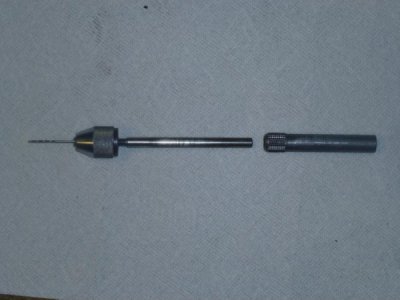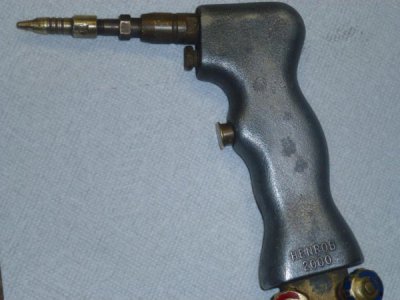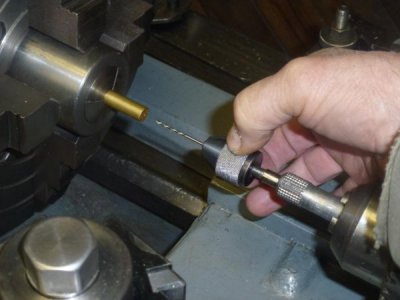- Joined
- Feb 7, 2013
- Messages
- 2,485
This little tool comes in really handy for drilling small holes. I saw it on a You Tube video by "Joe Pi of Advanced Innovations". A special thanks to Joe
for taking the time to make the video. Several of my Henrob(also known as Cobra 2000 or Dillon" welding tips were in bad shape so decided to make
some new tips. It turns out that the threading on the welding tips is metric and without any metric taps, making new tips didn't seem doable. My worst tip
was a #3 tip that was bent and pretty much unusable. Since it was in that condidion, I had little to lose in repairing it. After drilling out the tip to 1/4 inch, a
tip was made to press fit into the existing tip. My thought was to silver solder the tip on to the drilled out tip but that proved unnecessary as the press fit
was entirely satisfactory with the advantage of still being removable. I may get some metric taps so I can make my own tips as the factory tips are quite
expensive. Also a set of micro-size drill bits will be useful.
The tool is basically a jig to allow hand feeding of a small bit into the work using the lathe. The photos will make it more clear.
This tool works nicely on the old Springfield Lathe set up for collet work.
A test of the tip proved to be successful as the flame was as good as a new tip would be. I used it to repair a cast iron leg
on a friend's coffee table and it turned out great using some old cast iron piston rings for filler rod.
Maybe this information will be useful to some of you who have some torch tips that need attention.
Being able to"feel feed" the bit by hand makes drilling tiny holes quite easy, no broken drill bits!


for taking the time to make the video. Several of my Henrob(also known as Cobra 2000 or Dillon" welding tips were in bad shape so decided to make
some new tips. It turns out that the threading on the welding tips is metric and without any metric taps, making new tips didn't seem doable. My worst tip
was a #3 tip that was bent and pretty much unusable. Since it was in that condidion, I had little to lose in repairing it. After drilling out the tip to 1/4 inch, a
tip was made to press fit into the existing tip. My thought was to silver solder the tip on to the drilled out tip but that proved unnecessary as the press fit
was entirely satisfactory with the advantage of still being removable. I may get some metric taps so I can make my own tips as the factory tips are quite
expensive. Also a set of micro-size drill bits will be useful.
The tool is basically a jig to allow hand feeding of a small bit into the work using the lathe. The photos will make it more clear.
This tool works nicely on the old Springfield Lathe set up for collet work.
A test of the tip proved to be successful as the flame was as good as a new tip would be. I used it to repair a cast iron leg
on a friend's coffee table and it turned out great using some old cast iron piston rings for filler rod.
Maybe this information will be useful to some of you who have some torch tips that need attention.

Being able to"feel feed" the bit by hand makes drilling tiny holes quite easy, no broken drill bits!


Last edited:

